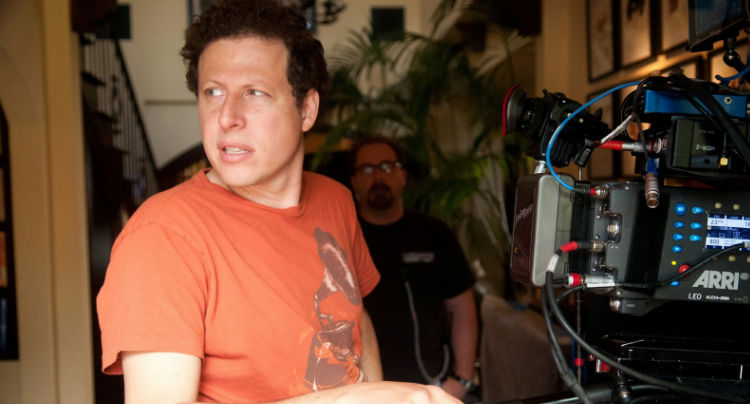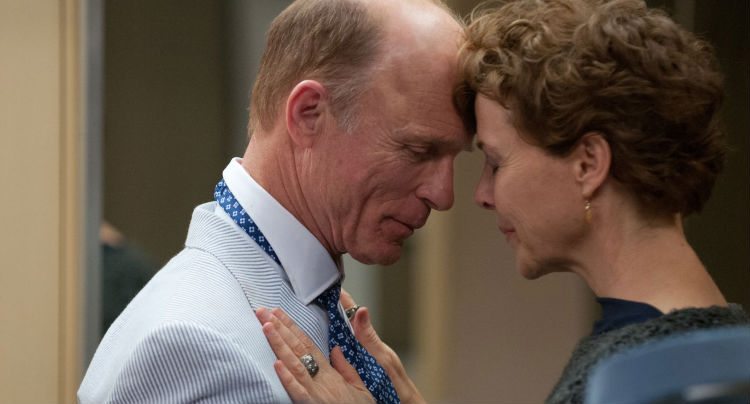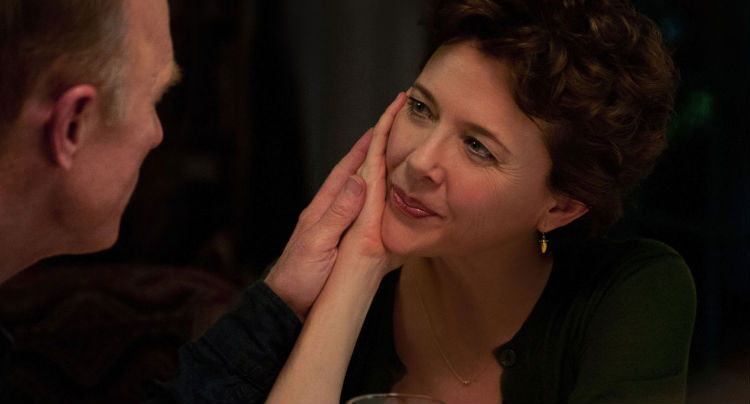Arie Posin Talks Seeing Double in ‘The Face of Love’

In Arie Posin’s The Face of Love, we follow a widow named Nikki (Annette Bening) who meets a man named Tom (Ed Harris) who looks, impossibly, exactly like her dead husband. Memories of her husband come rushing back to her as she and Tom start a relationship. Is she falling in love with Tom, or falling in love with her husband all over again? The film also stars Robin Williams and Jess Weixler.
Director/co-writer Posin chatted with us about working with Bening and Harris, how the film is inspired by his mother, paying homage to Vertigo, making Los Angeles romantic again, and more.
The Face of Love opens this Friday in San Francisco and is playing now in select cities.

You have two incredible collaborators manning your lead roles. As a director and storyteller, what was it like having such seasoned talents at your disposal?
Arie: It was a gift, a joy. The summer that I spent editing this movie was the best summer I’ve had maybe ever. It was a season of pure joy. On set they’re just so true and authentic, take after take. I feel like my job on set is to be kind of a firs line lie detector. Do I believe what I’m seeing? Do I believe the emotions? In the editing room, you can see that there were 5, 6, 7 takes that are all true and identical in their believability, but they’re also all subtly different. [Annette and Ed] are able to shade things and give you dimensions. It gives me such freedom to shape the movie. But at the same time, the hardest thing to do was to edit, because there are so many wonderful takes.
The story of how the idea for this story came to light is pretty remarkable. It came from your mother, correct?
Arie: Yeah. Years ago, a few years after my dad had passed away, my mother would come over to see me. She said words that are pretty similar to what Annette’s character says in the movie. She said, “A funny thing happened to me today. I was by the museum, in a cross walk on Wilshire Boulevard. I looked up and I saw a man coming towards me who looked like a perfect double of your father.” I said, “What did you do?” and she said, “It shocked me. He had a big smile on his face…and it felt so nice. It felt like it used to.” That’s the story that stuck with me and that I began to obsess, dream, and eventually write about.
I imagine going through something like that, you must feel a little bit crazy inside. What do you think the relationship is between sanity and love?
Arie: I think it’s different for everyone. My thought on it for this movie was, in a sense, that kind of love you have…you know, she spent 30 years with her husband, and she had him ripped away from her violently, tragically, just when they were at this stage where they’re thinking, “What are the two of us going to do together for the rest of our lives?” Seeing someone again who wakes up those feelings would be almost like an addiction. You get a taste, and you want more, despite yourself and despite the fact that it’s a transgressive relationship. It’s a compulsion, an obsession.
In terms of sanity, that was one of the biggest questions for me in writing the script and even throughout production. Annette’s falling in love through the course of the story, but she’s also falling back in love with her late husband. The question is always, she’s on this journey towards madness, but where is she at? How do we chart that? Is she crazy here, not crazy here? And it went back to the story with my mom, which became a real touchstone for us. The truth in that situation is that my mom wasn’t crazy, you know? She wasn’t imagining it. She saw this guy that looked like my dad, and it shook her to her core. I thought it was important that Nikki be sane, but as long as we could bear it. Once she goes mad, the audience becomes an observer of that. But to really participate, I thought it was important for her to be sane, then spiraling eventually into madness, but being able to hold that off as long as possible.
There are obvious similarities between the plot of your film and Vertigo.
Arie: Vertigo is one of my favorite movies. Hitchcock is unquestionably the master. There’s so much film grammar that we take for granted that was first proposed and best used by him. We all owe a lot to him. Having said that, when we wrote the first draft of the script, we set it in a museum because my mom’s story happened at the museum. The best cinematographers ask, “How few lights can I bring to a location in order to catch the naturalness of it?” That’s where the museum came out of. It didn’t come out of trying to do a take on a Vertigo type story. It all evolved from a very natural, organic place. But once we had the first draft and read it, it occurred to us: there’s a double in Vertigo, and there’s a double here. There’s a museum in both. A friend of mine saw the movie last week and said there was more than that. He said, “Well, she jumps into the bay in Vertigo, and she jumps into the ocean in your movie.” There are other movies that we love, and we had to check and make sure that if we were stealing, we we’d be stealing deliberately. (laughs) Another movie we talked about was The Double Life of Veronique. There’s a double there, as well, and it takes this metaphysical look at people who look alike. It’s been done many times.
Although this is a romantic movie, I wanted it to be infused with tension and suspense. The premise doesn’t naturally suggests suspense and tension, and yet I love so many of those movies in the ’40s, ’50s, and ’60s that were romantic but also had a bit of tension. And that’s certainly true of Vertigo.

San Francisco plays a big part in Vertigo, and Los Angeles plays a big part in yours.
Arie: That was something that I was very much inspired by Vertigo about. San Francisco is so much a character in that movie. I’ve fallen in love with Los Angeles, and I wanted it to become a backdrop. I live here, and I feel the romantic side of the city. It’s beautiful, but I haven’t seen it in movies in a long, long time. That was my hope. There was actually a moment when a financier offered to make the movie with us if we shot it in Baton Rouge. We turned it down with hopes of staying in LA and using the city as the backdrop for our story, a character in itself.
What scene are you most proud of?
Arie: One of the most challenging scenes in the movie is the scene where the daughter comes in and discovers that her mom has been in a relationship with a man that looks like her father. From the moment Nikki keeps this secret, the audience is savvy enough to know that the secret is going to come out. The question is how and when, and who’s going to find out. On one level, you want to fulfill that expectation, but on the other hand also make it surprising. In that scene, you have three people in a very hot, violent confrontation, and what I wanted to convey was the three points of view. They’re each coming at it with their own point of view, and I wanted the audience to identify with all three of them. As we bounce around the scene, you know why each person is reacting the way they are, and you can see the story from their perspective. That was a real challenge in the writing, shooting, and editing.
It’s a big scene to carry on your shoulders. I had a director friend of mine say, “It takes some nerve to take potentially the biggest scene in your movie and put it on the shoulders of the least experienced actor in the scene.” On top of that, he said, “If that scene didn’t work, the movie would fall apart.” It was a really critical scene, and Jess (Weixler, who plays the daugher) played it so brilliantly, against two of the best actors that we have.
